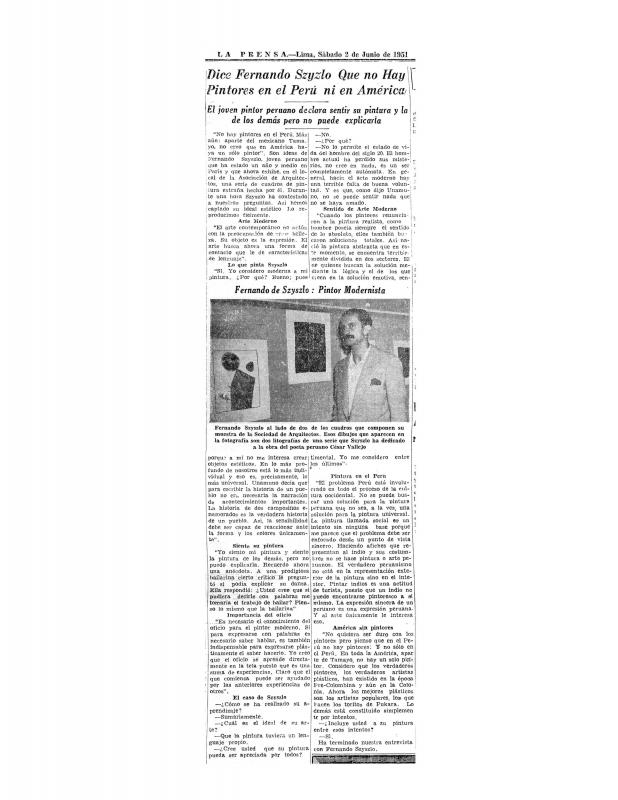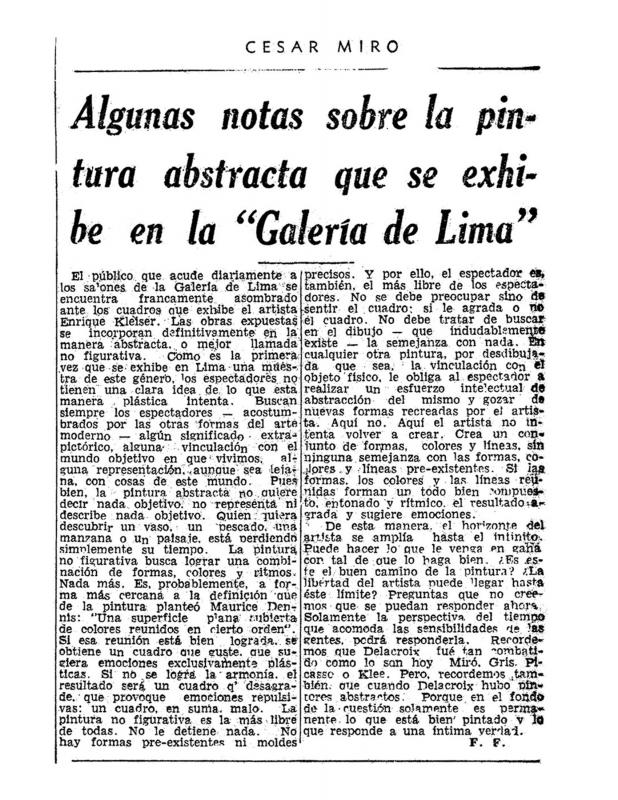Peruvian artists such as Juan Barreto (1913–91), Juan Manuel de la Colina (b. 1917), and Antonino Espinosa Saldaña (1893–1969) had been crafting an abstract language in their more experimental painting since the late 1940s, but the first Peruvian exhibition of non-figurative painting was not organized until October 1950. As it happens, there was a connection between the name of the exhibitor—Enrique Kleiser (1905–77), the Swiss-born painter who lived in Peru—and the history of Peruvian abstraction. The art critic Carlos Raygada (1898–1953), writing in El Comercio, the Lima newspaper, had praise for and some reservations about the exhibition, which was held at the Galería de Lima, the leading promoter of modern art in the city. Local critics, on the whole, viewed the exhibition in positive terms; none of the few reviews panned the new style, unlike the response sparked in May 1951 by the statements and exhibition of works by Fernando de Szyszlo (b. 1925).
[See the following in the ICAA digital archive, “Dice Fernando Szyszlo que no hay pintores en el Perú ni América: el joven pintor peruano declara sentir su pintura y la de los demás pero no puede explicarla” [Fernando Szyszlo says there are no painters in Peru or in Latin America: the young Peruvian painter claims to be able to feel his own painting and the work produced by other artists, but cannot explain it] (doc. no. 1137793)]. Significantly, although there was an article (signed with the initials F. F.) that noted the difference between “non-figurative painting” and “representation” [“Algunas notas sobre la pintura abstracta que se exhibe en la ‘Galería de Lima’” (doc. no. 1150803)], some of the works in Kleiser’s exhibition already showed the development of an abstract language. The synthesis in these works was perhaps the fundamental difference between them and the non-figurative language presented by Szyszlo the following year in works that had no discernible connection whatsoever with the traditional concept of a “subject.” Critical response to both exhibitions illustrates the major impact of Szyszlo’s cheeky claim that “there are no painters in Peru”—the explosive statement that launched the first debate about abstract art in Peru.


